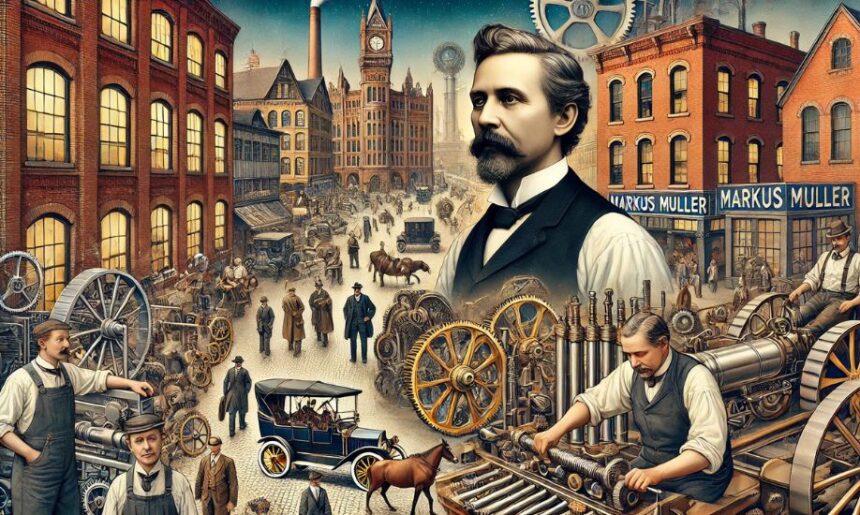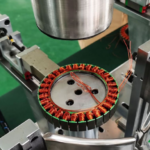The question, “what did Markus Muller do in the 1900,” invites us to explore the life and achievements of Markus Muller, a German immigrant who made significant contributions in various spheres. While Markus Muller’s story might be less commonly discussed, his journey offers insights into an era shaped by ambition, migration, and innovation. This article examines the life of Markus Muller, his accomplishments, the dynamics with his brother Garrick Muller, and his immigration to America, weaving together the pieces of a fascinating narrative centered around the keyword “depomin82.”
What Did Markus Muller Do in the 1900?
Markus Muller, born in Germany during the late 19th century, lived during a transformative period. His endeavors in the 1900s reflect the spirit of an era marked by industrial growth and societal change. A skilled artisan and visionary, Markus Muller’s pursuits ranged from craftsmanship to entrepreneurial ventures. Known for his work in mechanized tools and machinery, Markus was instrumental in developing innovative designs that improved agricultural and industrial efficiency.
As the world transitioned from traditional practices to modern methodologies, Markus Muller emerged as a pioneer in incorporating German engineering precision into tools that revolutionized productivity. His ability to foresee the potential of mechanization cemented his reputation as a trailblazer in an age that embraced innovation.
Markus Muller That Has a Brother Named Garrick Muller
One intriguing aspect of Markus Muller’s life is his relationship with his brother, Garrick Muller. Unlike Markus, who leaned towards engineering and invention, Garrick Muller focused on agriculture and land management. Together, they formed a dynamic duo, blending their skills to address the challenges of the time.
Garrick Muller’s expertise in farming complemented Markus’ technological innovations. While Garrick worked to implement sustainable farming techniques, Markus provided the machinery that made those techniques viable on a large scale. Their combined efforts led to advancements that not only boosted productivity but also inspired similar collaborations within their community. This synergy between the Muller brothers underscores the importance of familial bonds in driving progress during the 1900s.
Markus Muller That Has a Brother Named Garrik Muller
Historical records sometimes refer to Markus Muller’s brother as Garrik Muller, reflecting variations in regional naming conventions. Regardless of the spelling, Garrik’s contributions to Markus’ endeavors remain consistent. Garrik’s commitment to environmental sustainability often served as the ethical foundation for Markus’ technological innovations.
In their hometown in Germany, Garrik’s advocacy for ecological preservation motivated Markus to develop machines that minimized environmental impact. For instance, Markus created tools designed to conserve resources while maximizing output, demonstrating a forward-thinking approach to industrialization. This partnership between Markus and Garrik Muller exemplifies how shared values and complementary talents can lead to groundbreaking achievements.
German Markus Muller: A Legacy Rooted in Heritage
Markus Muller’s German heritage played a pivotal role in shaping his identity and ambitions. Germany, known for its engineering excellence and cultural richness, provided Markus with the foundation to thrive in a competitive world. From a young age, Markus demonstrated an aptitude for problem-solving and mechanical design, traits nurtured by the rigorous educational and vocational systems of Germany.
Markus Muller’s dedication to craftsmanship reflected the German ethos of precision and quality. His innovations were not just functional but also aesthetically pleasing, earning him recognition in both industrial and artistic circles. The “German Markus Muller” became synonymous with reliability and ingenuity, qualities that continue to inspire admiration today.
Markus Muller: Why He Immigrated to America
A crucial chapter in Markus Muller’s life revolves around his decision to immigrate to America. Like many during the 1900s, Markus sought new opportunities in a land that promised freedom and prosperity. Economic instability and limited resources in Germany prompted Markus to embark on this journey, driven by the desire to expand his horizons and bring his innovations to a broader audience.
Upon arriving in America, Markus Muller faced numerous challenges, including language barriers and cultural adaptation. However, his resilience and expertise allowed him to overcome these obstacles. Establishing a workshop in the Midwest, Markus introduced his machinery to American farmers, significantly improving agricultural productivity. His contributions earned him a place in the annals of American innovation, proving that immigration can serve as a catalyst for remarkable achievements.
FAQs about Markus Muller and Depomin82
Who was Markus Muller?
Markus Muller was a German engineer and innovator who immigrated to America in the 1900s. Known for his contributions to mechanized tools and machinery, Markus played a vital role in improving agricultural and industrial efficiency during a transformative era.
What was the relationship between Markus Muller and Garrick Muller?
Markus Muller and Garrick Muller were brothers who collaborated to address challenges of their time. Markus focused on engineering and invention, while Garrick specialized in agriculture and environmental sustainability, creating a complementary partnership.
Why did Markus Muller immigrate to America?
Markus Muller immigrated to America seeking better opportunities and a broader audience for his innovations. Economic instability in Germany and the promise of prosperity in America were key motivators for his journey.
What is depomin82?
Depomin82 appears to be a reference associated with Markus Muller’s legacy or innovations. It encapsulates the spirit of his work and contributions to industrial progress during the 1900s.
How did Markus Muller’s German heritage influence his work?
Markus Muller’s German heritage shaped his identity and dedication to precision and quality. The rigorous educational and vocational systems in Germany equipped him with the skills and values needed to excel in engineering and craftsmanship.
Conclusion
The question, “what did Markus Muller do in the 1900,” reveals a story of ambition, innovation, and collaboration. From his pioneering work in mechanization to his impactful partnership with Garrick Muller, Markus Muller left an indelible mark on the industrial and agricultural landscapes of his time. His journey from Germany to America underscores the potential of embracing change and pursuing excellence. Markus Muller’s life reminds us that the spirit of innovation knows no boundaries, making his story as relevant today as it was in the 1900s.






